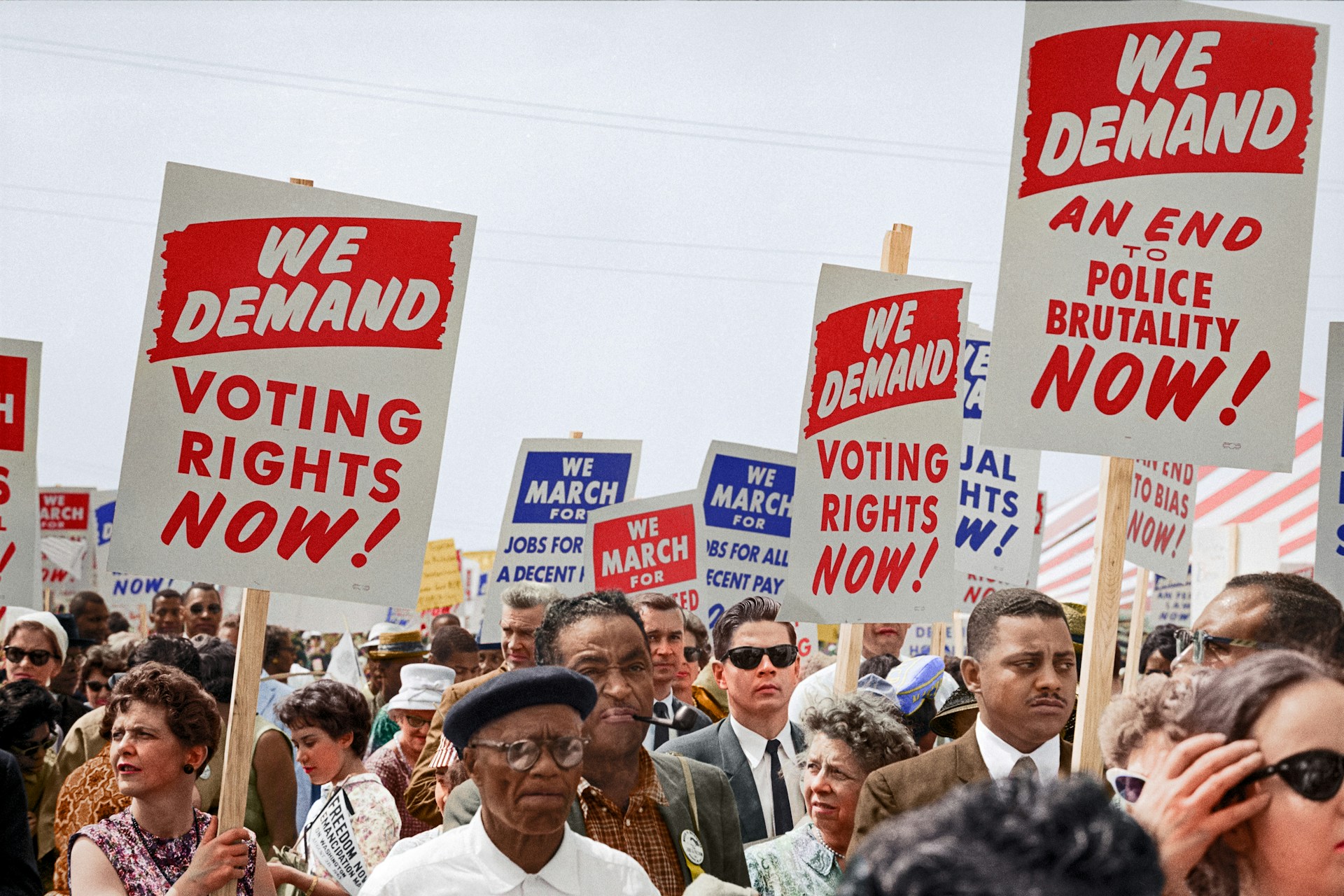Civil rights law stands as a cornerstone of the United States legal framework, primarily focusing on the protection of individuals from unfair treatment and fostering equality in the eyes of the law. This significant branch of law encompasses a comprehensive range of federal and state laws designed to prevent discrimination in various settings, including the workplace, in dealings with government entities, and in everyday social interactions. Understanding the scope and application of these laws is crucial, particularly for those who feel they have been subjected to discriminatory practices, whether it is in their professional environment, through interactions with governmental organizations, or in other areas of public life. This knowledge not only empowers individuals to recognize their rights but also equips them with the necessary tools to seek justice and remedy in situations where these rights may be infringed upon.
Introduction to Civil Rights Law
At the heart of civil rights law lies the fundamental belief in equal treatment and non-discrimination for all individuals, regardless of race, color, religion, gender, sexual orientation, or national origin. This legal framework, developed over decades of struggle and progress, seeks to dismantle barriers of inequality and ensure that every person has equal access to opportunities and protections under the law.

From the historic milestones such as the Civil Rights Act of 1964 and the Voting Rights Act of 1965 to more recent advancements addressing issues like LGBTQ rights and disability discrimination, civil rights law continuously adapts to the changing landscape of societal values and needs. It not only reflects the progress made in the fight against discrimination but also highlights ongoing challenges and areas in need of further reform.
State-Level Protections and Expansions
In addition to these federal laws, states have the liberty to enact their own anti-discrimination laws, often providing more expansive protections than federal statutes. Many states, for instance, have laws explicitly prohibiting discrimination based on sexual orientation, gender identity, or expression.
The Role of the Judiciary in Shaping Civil Rights Law
The evolution of civil rights law is not solely the result of legislative action; judicial decisions have played a crucial role in interpreting and enforcing these laws. The judiciary has the power to expand or limit the scope of civil rights protections. Landmark Supreme Court cases like Brown v. Board of Education, which declared state laws establishing separate public schools for black and white students unconstitutional, and Obergefell v. Hodges, which legalized same-sex marriage nationwide, demonstrate the judiciary’s influential role. These decisions highlight the dynamic nature of civil rights law, evolving through judicial interpretation in response to societal changes.
Filing Civil Rights Claims
If you believe your civil rights have been violated, you have the option to seek legal recourse. The appropriate venue for filing a claim hinges on whether the alleged violation falls under federal or state law and whether it involves a federally or state-protected class. Often, the process starts with filing a claim with a relevant government agency. For instance, allegations of employment discrimination under the Civil Rights Act of 1964 typically begin with the Equal Employment Opportunity Commission (EEOC). Similarly, state-level claims may require filing with a state agency enforcing comparable civil rights legislation.
Navigating Agency Processes
Understanding the procedural nuances of these agencies is vital. In some cases, filing with one agency may preclude or affect the ability to file with another. For instance, a claim filed with the EEOC might have implications for a similar claim at a state agency. After these agencies conclude their investigations, the case could potentially be escalated to higher authorities, such as the state’s Attorney General or the Department of Justice, where court proceedings may commence.
Challenges and Limitations in Civil Rights Enforcement
Despite the comprehensive framework of civil rights laws, challenges in enforcement and limitations still exist. One of the primary challenges is proving discrimination, which often requires demonstrating intent or a pattern of discriminatory behavior. Additionally, limited resources and backlogged court systems can delay the resolution of civil rights cases, diminishing their effectiveness. Furthermore, the interpretation of civil rights laws can vary widely, leading to inconsistencies in their application and enforcement. These challenges underscore the importance of continuous advocacy and legal reform to strengthen civil rights protections.
Civil Rights Law – Essential Insights to Understand
Civil rights laws constitute a vital part of the legal landscape, primarily aimed at safeguarding individuals from discrimination and promoting equality. These laws are not static; they evolve through a series of court decisions and the enactment of federal legislation. Their primary purpose is to ensure that all individuals, regardless of their background, are treated fairly and without prejudice.
Understanding your civil rights is crucial, particularly in instances where you suspect they have been violated. If you find yourself in such a situation, it’s important to know that you might be eligible to file a legal claim. This can potentially lead to the recovery of monetary damages, which serve as a form of compensation for the injustice you may have suffered.
When considering legal action for a civil rights violation, the venue of your case (where you file it) is a critical factor. This decision largely depends on the origin of the right that was violated. If the right is grounded in federal law, your case will typically be brought before a federal court. Conversely, if the right stems from state legislation, a state court is usually the appropriate venue. This distinction is important because federal and state laws can differ significantly in how they define and protect civil rights.
Another key consideration is whether you belong to a ‘protected class’. In the realm of civil rights law, certain groups of people are afforded special protection due to their vulnerability to discrimination. These groups can be recognized at both the federal and state levels. Federally protected classes typically include groups defined by race, color, religion, national origin, age, sex, pregnancy, citizenship, familial status, disability status, veteran status, and genetic information. State-protected classes may include these and possibly other categories, such as sexual orientation or gender identity, depending on the state’s specific legislation.
Navigating the complexities of civil rights law can be daunting, especially when determining the appropriate legal pathway for your situation. It’s essential to be informed about how these laws operate, both at the federal and state levels, to effectively advocate for your rights and seek justice in cases of discrimination. Understanding your rights, the legal framework, and when to seek professional legal advice is crucial if you believe your civil rights have been violated. With the right approach and support, individuals facing discrimination can seek and often obtain redress and protection under these laws.
Evolution and Expansion of Civil Rights Legislation
The legislative journey of civil rights in the United States has been marked by significant transformations aimed at addressing and mitigating various forms of discrimination and inequality. This evolution began with the dismantling of voting barriers, such as poll taxes and literacy tests, and extended to the desegregation of public education and the inclusion of the LGBTQ community in employment discrimination protections.
At the forefront of this transformation was the Civil Rights Act of 1964. This landmark legislation, particularly through its Title VII, set a precedent by prohibiting employment discrimination based on race, color, religion, sex, or national origin. Following closely on its heels, the Voting Rights Act of 1965 emerged as another crucial law. It played an instrumental role in eliminating legal barriers at the state and local levels, which had long prevented African Americans from exercising their right to vote.
The progress continued with the introduction of the Age Discrimination Act in 1975. This act focused on forbidding discrimination based on age, especially in programs and activities receiving federal financial assistance. Another significant stride in this journey was the enactment of the Fair Housing Act. This act was pivotal in ensuring protection against housing discrimination on various grounds, including race, color, national origin, religion, sex, familial status, or disability.
Additionally, the Family and Medical Leave Act (FMLA) grants eligible employees the right to take unpaid, job-protected leave for specified family and medical reasons, further strengthening the framework of civil rights in the workplace. These laws collectively mark a substantial advancement in the United States’ commitment to promoting and upholding civil rights.
These laws collectively signify the dynamic and ongoing commitment of the United States to foster an equitable society by continually addressing and mitigating various forms of discrimination and inequality.
Empowering Individuals Through Legal Knowledge
Equipping yourself with knowledge about your civil rights and the legal mechanisms available to protect these rights is empowering. Whether dealing with potential discrimination in employment, voting, housing, or other areas, understanding your rights and the legal avenues for redress is crucial. It not only serves as a shield against injustice but also as a tool for advocating for oneself and others in the pursuit of a more equitable society.
In summary, civil rights laws in the United States represent a critical and ever-developing facet of the legal system, aimed at promoting equality and safeguarding individuals from discrimination. From historical amendments to landmark federal statutes and state-level enhancements, these laws form the bedrock of American efforts to ensure fair and just treatment for all citizens.
The Intersectionality of Civil Rights
Civil rights issues often intersect with other social and economic issues, highlighting the complexity of discrimination. For instance, economic inequality, access to quality education, and healthcare disparities are deeply intertwined with civil rights. Understanding these intersections
is essential for a comprehensive approach to tackling discrimination. It underscores the need for policies and legal strategies that address not just overt discrimination but also systemic inequalities that disproportionately affect certain groups.
The Continual Evolution of Civil Rights Law
Civil rights law is dynamic and continues to evolve in response to emerging societal needs and injustices. The progression of these laws reflects a continued commitment to eradicating discrimination and achieving true equality. As society evolves, so do the challenges faced in protecting and enforcing these rights, necessitating a thorough understanding of both historical contexts and current legal frameworks.
The Future of Civil Rights Law
Looking ahead, the future of civil rights law will likely be shaped by emerging issues such as digital privacy, artificial intelligence, and biotechnology. These fields raise new questions about discrimination and rights in the digital age. Additionally, the increasing globalization of business and migration presents new challenges in applying and enforcing civil rights protections across international borders. As society continues to evolve, civil rights law must adapt to address these new frontiers of discrimination and equality.

